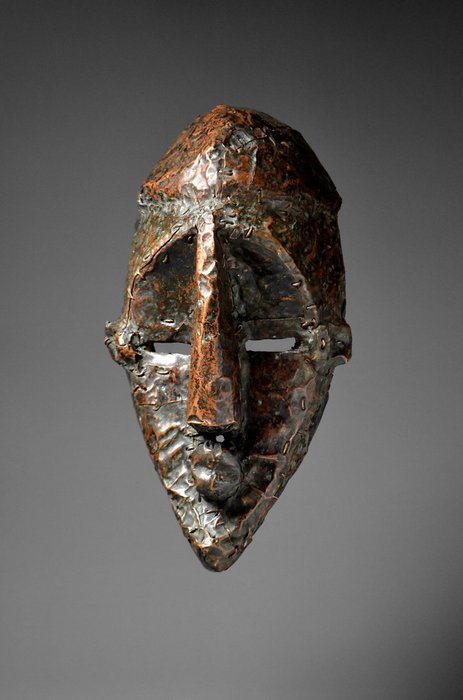
Mask - République démocratique du Congo (No Reserve Price)
Nº 82604593

Nº 82604593

The existence of metal masks among the Lwalwa (Lwalu)on the left bank of the Kasai river was first revealed in 1961 by Marie-Louise Bastin. Eight years later, Rik Ceyssens found a small number of copper-plated masks in the same region, but on the right bank of the river. This discovery enabled him to identify a tradition of metal masks - fashioned from hammered copper or from wood covered with metal - particular to the Upper-Kasaï region, shared by the Kongo-Dinga, the Kata, the Lwalwa (Lwalu) and, by extension, the Salampasu. According to Ceyssens (in Herreman and Petridis 1993: 97), they all proceed from a single principle: the shared notion of community. "More specifically, they are an expression of the collective organisation (mukanda), which governs both the land and society at large.
In 1981, François Neyt was the first to describe the rare copper-plated masks in greater depth in his book Traditional Arts and History of Zaïre. According to Neyt (1981: 205), "the [Lwalwa (Lwalu)], western neighbours of the Kongo-Dinka, also possess a somewhat rare mask. It is the ngongo wa shimbungu mask. It is imbued with a great artistic and ritual significance in the Ngongo institution(1). [...] Strips of copper are secured with metal clips on a wooden core with an elongated profile: it features a broad, rounded forehead and a triangular, receding chin. The centre line in the middle of the forehead, the nasal ridge, the prominent yet slender lips and the slanting, perforated eyes are all morphological features that are also featured on wooden masks [including the raised keloids at the temples]."
Metal plated masks are part of a very restricted corpus: Ceyssens (loc. cit.: 99) It is unknown whether the tradition of the famous Lwalwa (Lwalu) wooden masks preceded that of plated objects, and whether the wooden core had a previous existence as a dance mask in itself.
Comment acheter sur Catawiki ?
1. Découvrez des objets d’exception
2. Faites la meilleure offre
3. Effectuez un paiement sécurisé